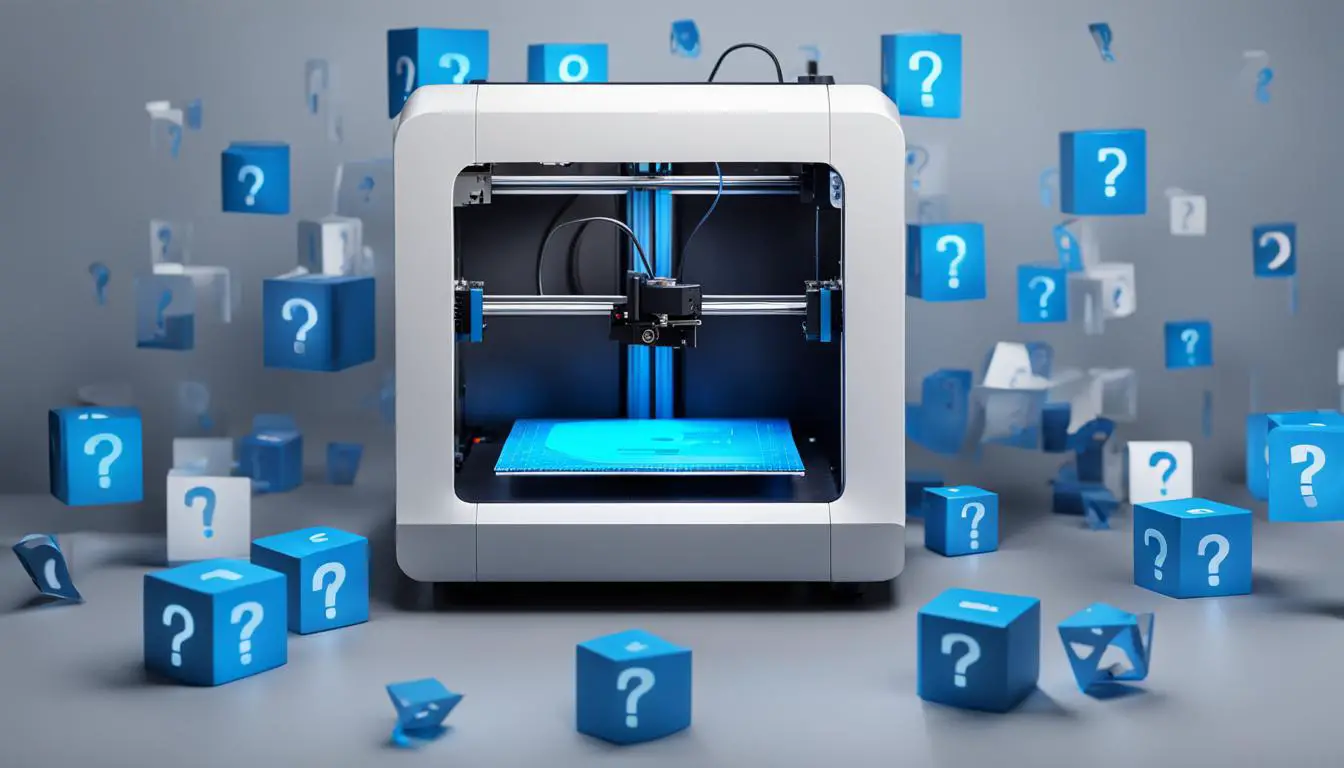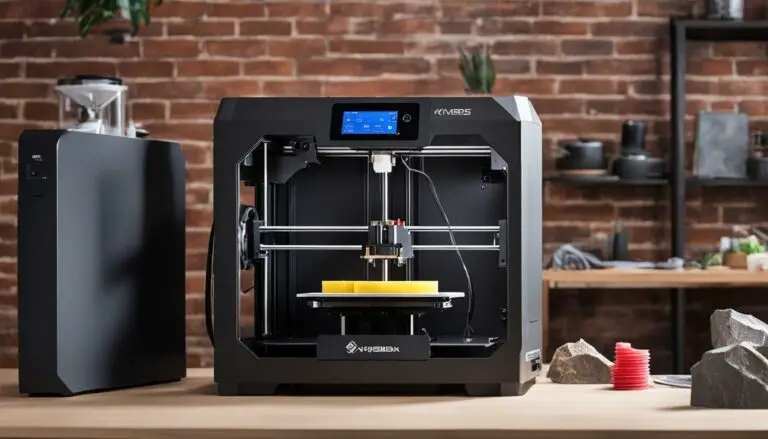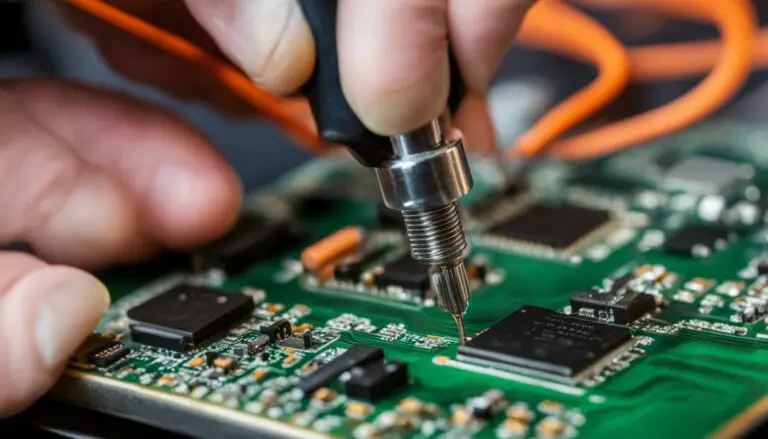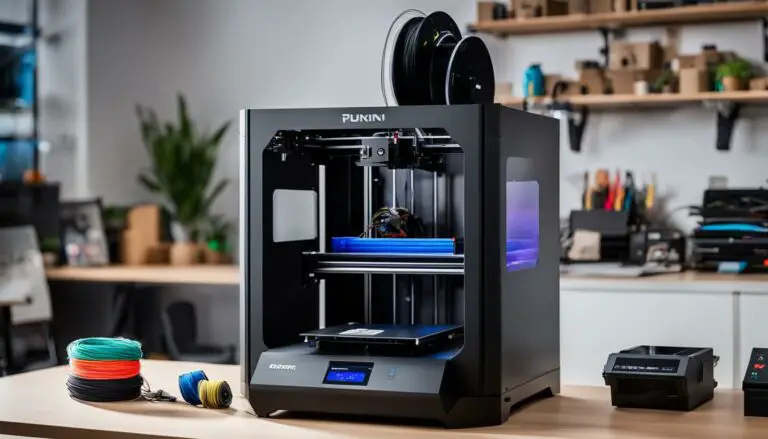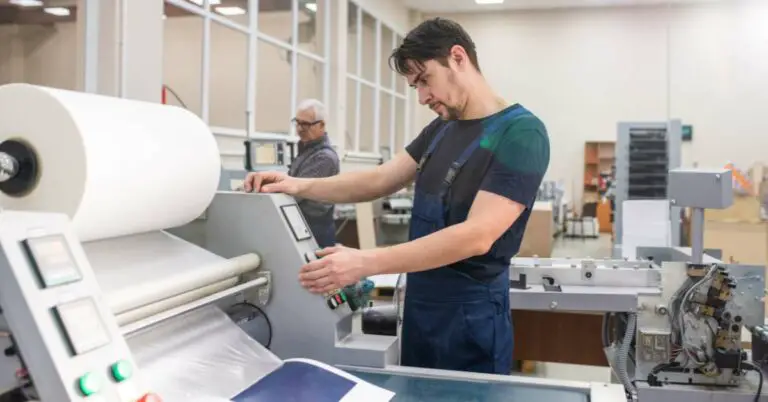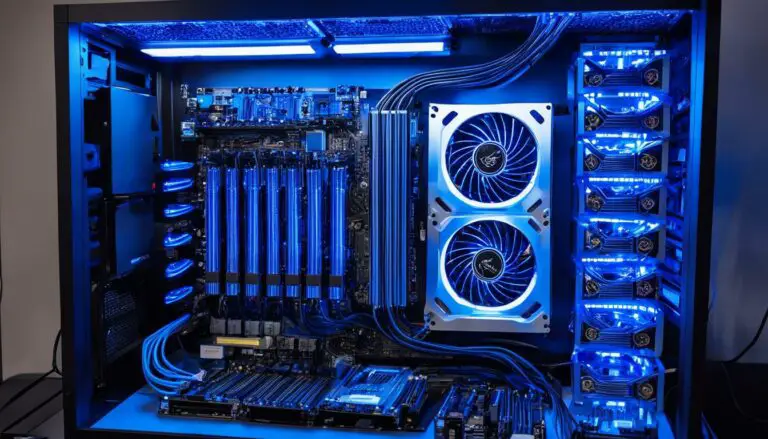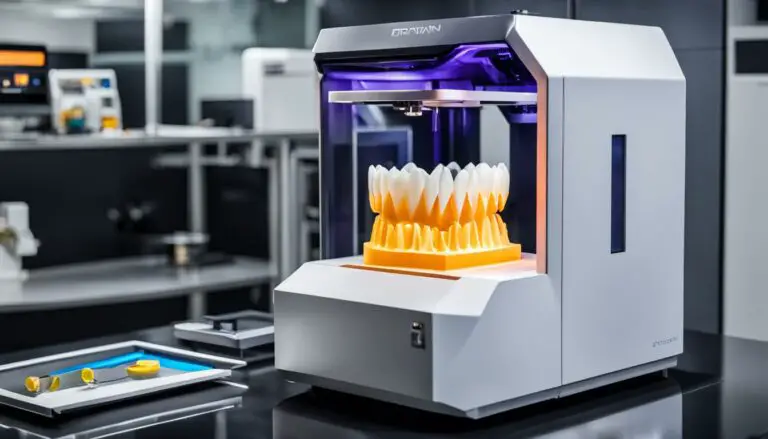Test Your 3D Printing Knowledge with Our Quiz
Originally posted on January 10, 2024 @ 1:28 am
Welcome to our interactive quiz on 3D printing! Are you prepared to assess your understanding and discover how familiar you are with 3D printing? Whether you are new to the field or a specialist, this quiz is created to challenge your comprehension of this revolutionary technique. From the fundamentals of 3D printing to its uses and potential advancements, this quiz covers all aspects. So, gather a pen and paper, get prepared to respond to some inquiries, and let’s examine your grasp on 3D printing!
- Test your knowledge of 3D printing with our interactive quiz.
- The quiz covers various aspects of 3D printing, from the basics to its applications and future possibilities.
- Challenge yourself and see how much you know about this revolutionary technology.
- Gain insights into the world of 3D printing and expand your understanding of its capabilities.
- Discover the potential impact of 3D printing on various industries and its role in shaping the future.
How Does 3D Printing Work?
3D printing, also known as additive manufacturing, is a fascinating process that brings digital designs to life. In this section, we will explore the inner workings of 3D printing and how it transforms virtual models into physical objects.
To begin the 3D printing journey, a digital model is created using computer-aided design (CAD) software. This model serves as the blueprint for the object to be printed. It can be anything from a simple geometric shape to a complex, intricate design. The possibilities are endless.
Once the digital model is ready, it is time to prepare it for 3D printing. This process involves slicing the model into thin layers, similar to how a loaf of bread is sliced. Each layer represents a cross-section of the final object.
With the model sliced, it is time to choose the appropriate material for printing. 3D printers can work with a variety of materials, including plastic, metal, or composite substances. The material selection depends on the specific requirements of the object and its intended use.
Now, let’s get to the heart of 3D printing – the layering process. The printer starts by depositing a thin layer of the chosen material onto the build platform. It then moves on to the next layer, repeating this process until the complete object is formed. The printer meticulously follows the instructions from the digital design, layer by layer, gradually building up the object’s structure.
This layer-by-layer approach is what sets 3D printing apart from traditional manufacturing methods. It allows for the creation of objects with complex geometries, intricate details, and unique shapes that would be challenging to produce using other techniques.
“3D printing brings digital designs to life, layer by layer, transforming virtual models into physical objects.”
Imagine being able to print a fully functional prototype of a product before investing in expensive tooling or equipment. Or being able to customize products to perfectly fit individual needs and preferences. 3D printing makes these possibilities a reality.
Now, let’s delve deeper into the world of 3D printing with a visual representation of the layer-by-layer process:
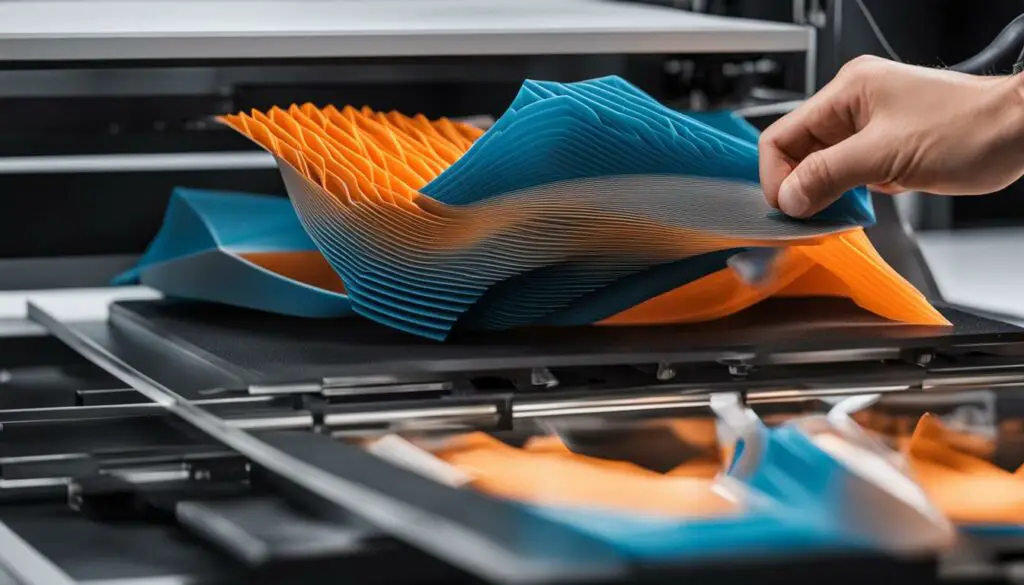
The 3D Printing Layering Process:
| Step | Description |
|---|---|
| 1 | The digital model is sliced into thin layers. |
| 2 | The printer deposits a layer of material onto the build platform. |
| 3 | The printer moves to the next layer and repeats the process. |
| 4 | The layers stack on top of each other, gradually creating the final object. |
| 5 | Once complete, the object is removed from the build platform. |
As you can see, 3D printing is a remarkable technology that is revolutionizing manufacturing and design processes across industries. It offers endless possibilities for innovation, customization, and rapid prototyping.
In the next section, we will explore the wide range of applications where 3D printing is making a significant impact. From rapid prototyping to on-demand production, the potential of this technology is awe-inspiring.
Applications of 3D Printing
3D printing offers a wide range of applications across various industries, revolutionizing the way we approach manufacturing. Let’s explore the key areas where this transformative technology is making a significant impact:
Rapid Prototyping
One of the primary applications of 3D printing is rapid prototyping. By leveraging its ability to quickly fabricate three-dimensional objects, designers and engineers can iterate their designs faster and more cost-effectively. This allows for enhanced product development processes, saving both time and resources. Rapid prototyping enables companies to refine their designs, test functionality, and gather valuable feedback before proceeding with mass production.
Customized Manufacturing
With 3D printing, customization becomes readily achievable. The technology empowers manufacturers to produce bespoke products tailored to individual needs and preferences. Whether it’s creating unique medical implants, personalized fashion accessories, or custom-designed consumer goods, 3D printing ensures that every item can be perfectly suited to its intended user. This level of customization enhances customer satisfaction, strengthens brand loyalty, and opens up new business opportunities.
On-Demand Production
Traditional manufacturing often relies on mass production and maintaining large inventories. This approach can be costly and cumbersome. However, 3D printing enables on-demand production, where items are manufactured as needed, eliminating the need for excessive stockpiling. This reduces inventory costs, minimizes storage requirements, and enables more flexible and efficient supply chains. On-demand production is especially advantageous in industries where customization and fast turnaround times are essential.
Industries across the board have embraced 3D printing for its versatility and efficiency. Let’s take a closer look at some sectors that have successfully incorporated this technology:
| Industry | Key Applications |
|---|---|
| Aerospace | Rapid prototyping of aircraft components, customized tools and parts manufacturing |
| Automotive | Prototyping of automotive designs, production of customized car parts |
| Healthcare | Custom prosthetics and implants, surgical guides, anatomical models |
| Architecture | Conceptual models, 3D-printed building components, intricate architectural designs |
| Fashion | Customized jewelry, bespoke footwear, avant-garde fashion designs |
These are just a few examples of how 3D printing is transforming industries and pushing the boundaries of what is possible. As the technology continues to evolve, we can expect to witness even more exciting and innovative applications in the future.
Now that we’ve explored the diverse applications of 3D printing, let’s delve into the advantages this technology offers over traditional manufacturing methods in our next section.
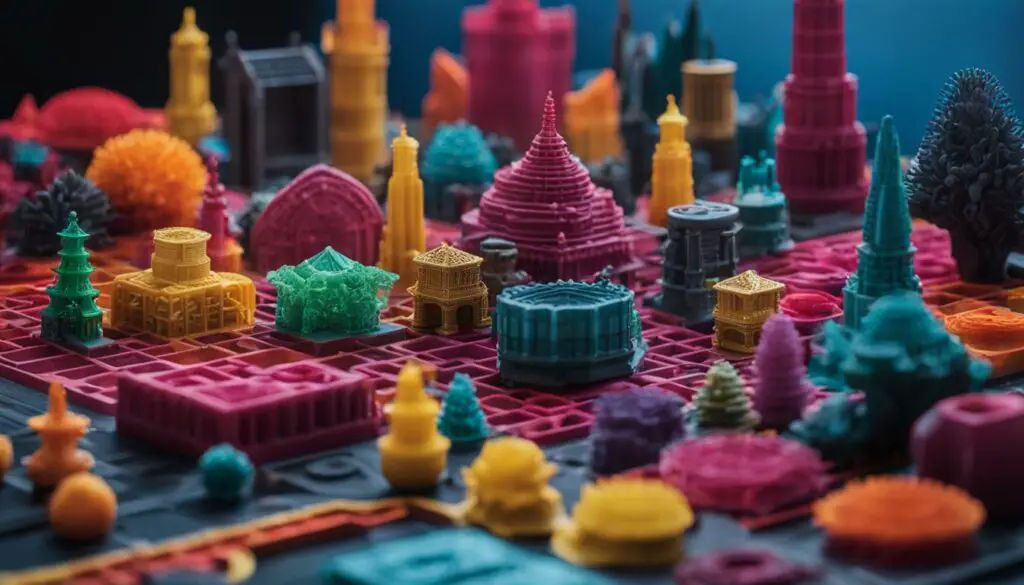
| Advantages of 3D Printing | Description |
|---|---|
| Complex Geometries | Allows for the creation of intricate designs and complex shapes that traditional manufacturing methods cannot easily achieve. |
| Rapid Prototyping | Enables quick production of physical prototypes, facilitating faster iterations and reducing time to market. |
| Reduced Costs | Minimizes material waste, eliminates the need for expensive molds or tooling, and offers on-demand production, resulting in cost savings for manufacturers. |
Future of 3D Printing
The future of 3D printing holds immense potential and opens up a world of possibilities. This groundbreaking technology is poised to revolutionize various industries, including healthcare, space exploration, and sustainable manufacturing.
Medical Applications
One of the most promising areas where 3D printing is making a significant impact is in the field of healthcare. The ability to create customized implants, prosthetics, and even human tissues and organs has the potential to transform the way we approach medical treatments and procedures.
Utilizing 3D printing technology, medical professionals can now design and manufacture patient-specific implants and prosthetics, ensuring a perfect fit and increased comfort. This personalization not only enhances the quality of life for patients but also improves treatment outcomes.
Moreover, 3D bioprinting, the creation of human tissues and organs layer by layer, offers hope for addressing the organ transplant shortage. Researchers are making remarkable progress in printing functional tissues and organs, opening up the possibility of customized, viable replacements for patients in need.
Space Exploration
In the realm of space exploration, 3D printing presents exciting opportunities. Traditionally, space missions require extensive supply chains to transport necessary tools and equipment. However, 3D printing can revolutionize this process by enabling the on-demand manufacturing of tools and parts directly on-site.
Imagine a future where astronauts have the capability to manufacture spare parts, tools, and equipment with a 3D printer aboard their spacecraft or on distant planets. This innovation would reduce reliance on Earth-based logistics, save valuable time, and enable more cost-effective space missions.
By harnessing the power of 3D printing, space agencies can overcome the limitations associated with weight constraints and the challenges of resupplying essential items during extended space missions.
Sustainable Manufacturing
With a growing global focus on sustainable practices, 3D printing offers a significant advantage in reducing material waste and energy consumption. Unlike traditional manufacturing methods, 3D printing enables precise utilization of materials, resulting in minimal scrap or excess waste.
By eliminating the need for molds or extensive tooling, 3D printing also reduces the energy required in the manufacturing process. This sustainable approach aligns with the goal of transitioning to more environmentally friendly and resource-efficient production methods.
Furthermore, 3D printing facilitates localized manufacturing, minimizing the need for long-distance transportation and reducing carbon emissions associated with supply chains.
“The future of 3D printing is not only exciting but also holds immense potential to transform healthcare, space exploration, and the way we approach sustainable manufacturing practices.”
The possibilities offered by the future of 3D printing are vast and continue to evolve as technology advances. From customizable medical solutions to streamlined space missions and sustainable manufacturing, the impact of 3D printing is set to be profound.
| Industry | Advancements |
|---|---|
| Healthcare | Customized prosthetics, patient-specific implants, 3D bioprinting |
| Space Exploration | On-demand manufacturing of tools and spare parts |
| Manufacturing | Reduced material waste, localized production |
Conclusion
Thank you for taking our interactive 3D printing quiz! We hope that this quiz has been an enjoyable and educational experience, testing your knowledge and expanding your understanding of this transformative technology.
3D printing has revolutionized the world of manufacturing, offering limitless possibilities for rapid prototyping, customized manufacturing, and other applications. As the technology continues to advance, we can expect to see even more innovative uses in industries such as aerospace, automotive, healthcare, architecture, and fashion.
By keeping up with the latest advancements in 3D printing, you can stay ahead of the game and become a valuable asset in this exciting field. Whether you are a designer, engineer, entrepreneur, or simply curious about this technology, there is always more to learn and explore.
We encourage you to continue expanding your knowledge in the realm of 3D printing and to stay curious about the future possibilities it holds. Stay connected with us for more updates, and be sure to share your newfound knowledge with others. Together, we can shape the future of manufacturing with the power of 3D printing.
FAQ
What is 3D printing?
3D printing, also known as additive manufacturing, is a process that creates three-dimensional objects by layering materials based on digital designs.
How does 3D printing work?
3D printing works by taking a digital model created through computer-aided design (CAD) software and slicing it into thin layers. These layers are then printed one by one, building the object layer by layer according to the digital design instructions.
What are the applications of 3D printing?
3D printing has a wide range of applications across various industries. It is commonly used for rapid prototyping, customized manufacturing, and on-demand production. Industries like aerospace, automotive, healthcare, architecture, and fashion have all embraced 3D printing for its versatility and efficiency.
What are the advantages of 3D printing?
Some advantages of 3D printing include the ability to create complex geometries and intricate designs, facilitating rapid prototyping and reducing time to market. It also eliminates the need for molds or tooling, minimizing material waste and reducing costs in both small-scale production and customized manufacturing.
What is the future of 3D printing?
The future of 3D printing is promising as it has the potential to revolutionize healthcare by creating customized implants, prosthetics, and even human tissues and organs. It can also be used in space exploration to manufacture tools and equipment on-demand, reducing the need for extensive supply chains. Furthermore, 3D printing promotes sustainable manufacturing practices by reducing material waste and energy consumption.

